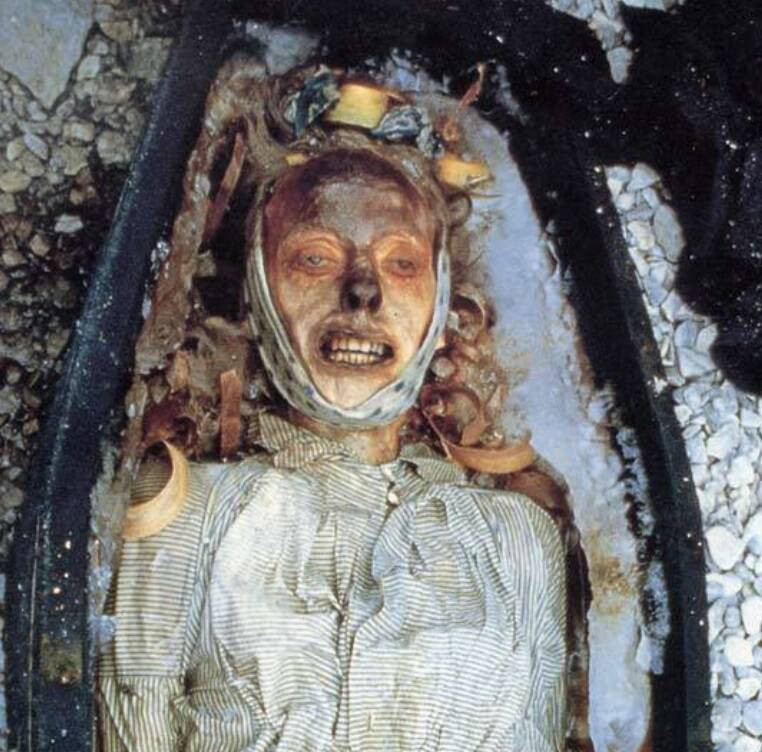 John Torrington
John Torrington
The Arctic, a realm of stark beauty and unforgiving wilderness, holds secrets as cold as its glacial landscapes. Among these chilling mysteries, few resonate as deeply as the story of the Franklin Expedition, a British voyage of 1845 that vanished into the icy expanse, leaving behind a legacy of tragedy and unanswered questions. At the heart of this haunting narrative lies John Torrington, an ordinary seaman whose name became synonymous with the expedition’s doomed fate when his remarkably preserved body was discovered over a century later. The Franklin Expedition mummies, including John Torrington, serve as poignant reminders of the desperate struggle for survival and the grim realities faced by these ill-fated explorers in their quest for the Northwest Passage.
In 1845, under the command of the seasoned Arctic explorer Sir John Franklin, two ships, HMS Erebus and HMS Terror, embarked from England with a crew of 134 men. Their mission was ambitious: to navigate the elusive Northwest Passage, a sea route through the Arctic connecting the Atlantic and Pacific Oceans. Equipped with the latest technology and provisions for three years, the expedition was initially perceived as well-prepared for the challenges ahead. However, disaster struck, and the ships and their entire crew disappeared without a trace.
For years, the fate of the Franklin Expedition remained shrouded in mystery, fueling speculation and numerous search expeditions. It wasn’t until the mid-19th century and later, with the discovery of artifacts, skeletal remains, and ultimately, the Franklin Expedition mummies, including John Torrington, that fragments of the tragic story began to emerge. These discoveries painted a harrowing picture of starvation, disease, and ultimately, cannibalism, as the crew battled against the relentless Arctic environment. The preserved body of John Torrington, in particular, offered an unprecedented glimpse into the physical toll and grim conditions endured by the expedition members.
The discovery of the wrecks of HMS Erebus in 2014 and HMS Terror in 2016 marked a significant turning point in unraveling the enigma of the Franklin Expedition. These remarkably well-preserved shipwrecks, explored by archaeologists using remotely operated vehicles, provided invaluable insights into the expedition’s final days and the material culture of the 19th-century British Royal Navy in the Arctic. However, even with these groundbreaking discoveries, the haunting story of John Torrington and the Franklin Expedition mummies continues to captivate and disturb, prompting ongoing research into the precise causes of the tragedy and the full extent of the crew’s suffering.
The Ill-Fated Voyage of John Torrington and the Franklin Expedition
The story of John Torrington and the Franklin Expedition is inextricably linked to the ambition and perils of 19th-century Arctic exploration. Sir John Franklin, a respected officer with prior Arctic experience, was chosen to lead this ambitious undertaking. Departing from Greenhithe, England, in May 1845, John Torrington, a 20-year-old leading stoker, and his 133 fellow crew members set sail with high hopes and the latest provisions, including tons of preserved food, expecting a journey of approximately three years.
Initial reports from a whaling ship in Baffin Bay in July 1845 indicated the expedition was progressing as planned. However, this was the last confirmed sighting by Europeans. The Erebus and Terror ventured further into the Arctic archipelago, eventually becoming trapped in pack ice in the Victoria Strait, near King William Island. This area, now known to be particularly challenging due to persistent ice conditions, proved to be the expedition’s undoing.
 Engraving Of The Hms Terror
Engraving Of The Hms Terror
Evidence pieced together from Inuit oral accounts, recovered artifacts, and the later discoveries of skeletal remains and the Franklin Expedition mummies, suggests a grim timeline of events. The ships became icebound in 1846, forcing the crew to overwinter in the Arctic. As time wore on, conditions deteriorated. Scurvy, starvation, and other illnesses began to take their toll. Lead poisoning, potentially from the ships’ sophisticated but flawed canning technology, is also believed to have been a contributing factor to the crew’s decline.
In 1848, after enduring two harsh winters trapped in the ice, the remaining crew, under the command of Captain Francis Crozier and Captain James Fitzjames after Franklin’s death in 1847, made the desperate decision to abandon ship and attempt to trek south towards safety. This arduous journey across the unforgiving Arctic terrain proved catastrophic. Weakened by starvation and illness, and hampered by inadequate equipment and supplies, the men succumbed to the brutal environment. Inuit accounts and archaeological evidence point to the expedition members resorting to cannibalism in their final, desperate attempts to survive.
Unearthing the Secrets of the Franklin Expedition Mummies: John Torrington’s Story
The discovery of three graves on Beechey Island in 1850 by search parties provided the first tangible evidence of the Franklin Expedition’s tragic fate. These graves, belonging to John Torrington, John Hartnell, and William Braine, who all died in the winter of 1846, remained undisturbed for over a century. It was not until the 1980s that anthropologist Owen Beattie and his team exhumed these Franklin Expedition mummies, including John Torrington, in an effort to understand the expedition’s demise.
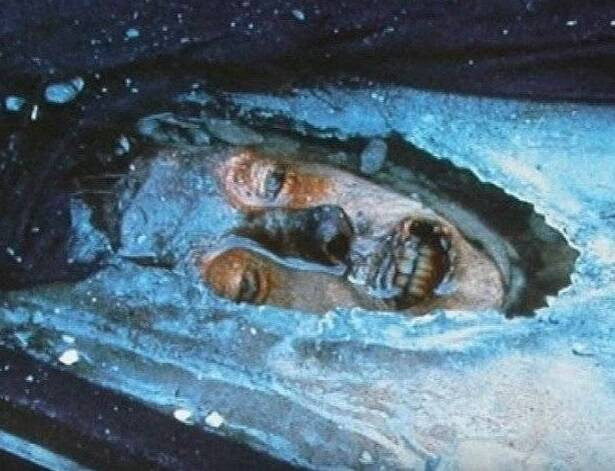 Frozen Corpse Of John Torrington
Frozen Corpse Of John Torrington
The exhumation of John Torrington’s body in 1984 was a pivotal moment. Frozen solid in the permafrost, Torrington’s remains were remarkably well-preserved, offering an unprecedented opportunity for scientific examination. The image of John Torrington’s face, emerging from the ice after 138 years, became a haunting symbol of the Franklin Expedition’s tragedy.
The autopsy of John Torrington revealed a young man, just 20 years old at the time of his death on January 1, 1846. He was found to be severely underweight and exhibited high levels of lead in his tissues, supporting the theory of lead poisoning. While the exact cause of death remained undetermined, the autopsy suggested a combination of factors, including pneumonia, starvation, and lead poisoning, likely contributed to his demise. The incredible preservation of John Torrington, and the other Franklin Expedition mummies, allowed researchers to gain invaluable insights into the physical condition and health challenges faced by the crew in the early stages of the expedition’s hardship.
 John Hartnell
John Hartnell
Subsequent exhumations of John Hartnell and William Braine in 1986 further enriched our understanding. Like John Torrington, their bodies were remarkably preserved, allowing for detailed forensic analysis. The examinations confirmed the presence of lead poisoning in all three men and provided further evidence of the harsh conditions and health struggles faced by the Franklin Expedition crew in their initial months in the Arctic. The Franklin Expedition mummies became not just historical artifacts, but also poignant testaments to the human cost of Arctic exploration.
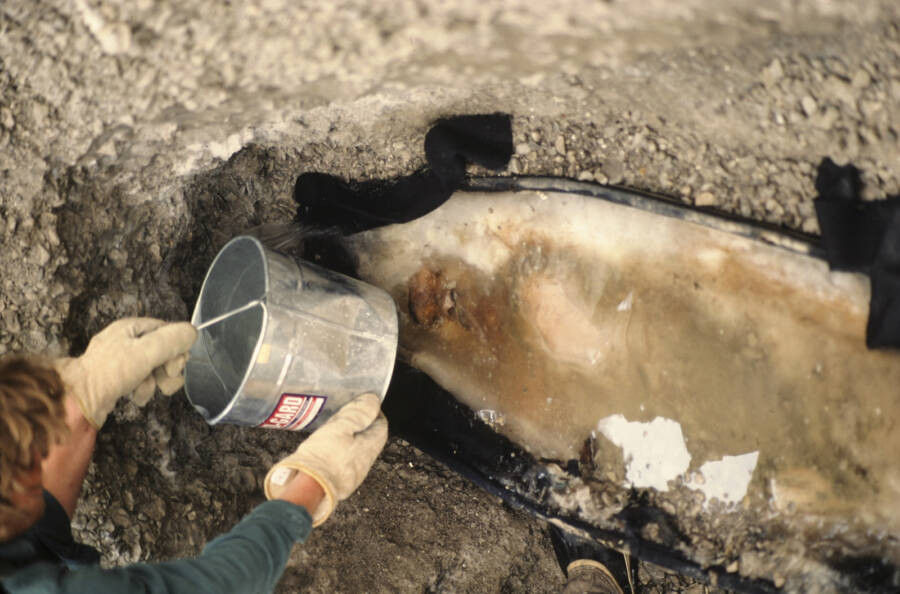 Exhuming Franklin Expedition Mummies
Exhuming Franklin Expedition Mummies
After the examinations, John Torrington, John Hartnell, and William Braine were returned to their graves on Beechey Island. Their final resting place remains a somber memorial to the lost Franklin Expedition and a reminder of the enduring mystery surrounding their ultimate fate.
Ongoing Investigations and the Enduring Legacy of John Torrington
Decades after the discovery of John Torrington and the Franklin Expedition mummies, the quest to fully understand the expedition’s tragedy continues. The discoveries of the Erebus and Terror shipwrecks have opened new avenues of research, providing access to a vast underwater archaeological site.
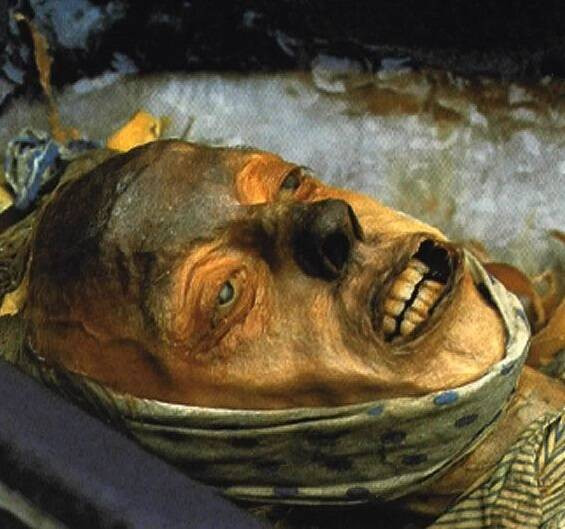 Face Of Franklin Expedition Mummy John Torrington
Face Of Franklin Expedition Mummy John Torrington
Underwater archaeologists have meticulously explored the wrecks, documenting their remarkably preserved interiors and recovering thousands of artifacts. These artifacts offer unprecedented insights into the daily lives of the crew, their technology, and the conditions aboard the ships during their final years. Analysis of the shipwrecks has also provided clues about the sequence of events leading to their abandonment and the expedition’s ultimate demise.
Furthermore, advancements in DNA analysis have allowed researchers to study the remains of other Franklin Expedition members recovered from various sites across the Arctic. These genetic studies aim to identify individual crew members, trace their origins, and potentially uncover further details about their health and the causes of death.
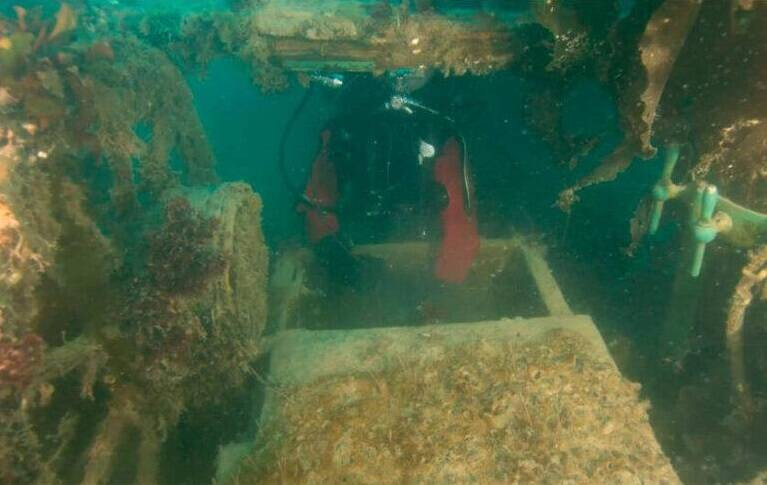 Researcher Diving Inside The HMS Terror
Researcher Diving Inside The HMS Terror
Despite these ongoing investigations and the wealth of information gleaned from the Franklin Expedition mummies and shipwrecks, some mysteries persist. The precise reasons for the ships becoming trapped in ice, the full extent of the crew’s suffering during their final trek, and the exact circumstances leading to the sinking of the Terror remain subjects of ongoing research and debate.
The story of John Torrington and the Franklin Expedition continues to fascinate and haunt us. The preserved image of John Torrington’s face, frozen in time, serves as a powerful reminder of the human cost of exploration and the enduring mysteries of the Arctic. While the full story of the Franklin Expedition may never be completely known, the ongoing research and the poignant legacy of John Torrington and the Franklin Expedition mummies ensure that their story will not be forgotten.

